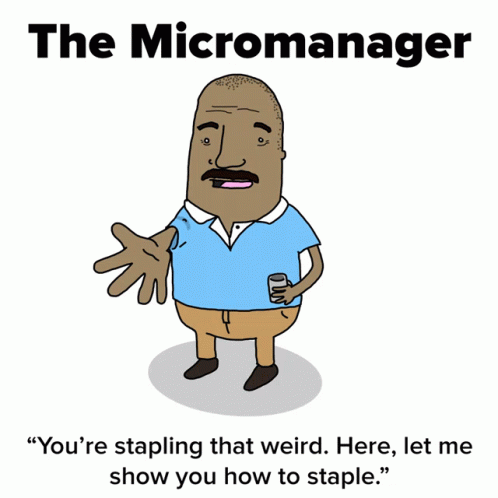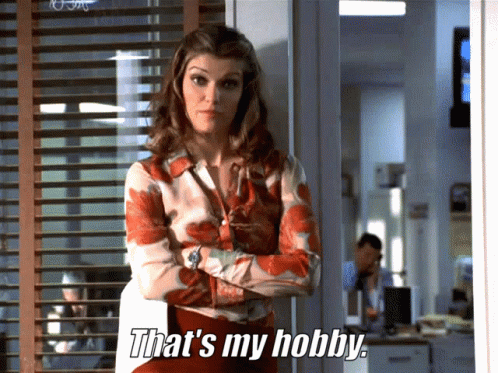There are nearly 2 million managers in the US. Out of those 2 million, the odds are for 90% of them stress is something they never forget to carry to work (and back from it). Yes, the title's words touch on managers and their tricky predicament at workplaces.
In striving to narrow down the chasm between "those above" and "those below", they are known to knock on the worst of exertions. Their days - and yours, in case you're floundering in those same wild waters - are filled with uncertainties, sudden shifts, hard decisions, and subordinates' problems that, by vocation, become their own. As if tackling your own life hurdles and bumps wasn't enough... They get griped, squeezed, and pushed to the edges. Each day their nerves get stretched due to the limited resources and high workload. But, you know, depositing problems under a rug comes with the territory.
So the fact that middle managers stand at the apex of burnout rates shouldn't come as a surprise to you. According to a recent Future Forum Pulse study, along with their younger comrades (employees aged from 18 to 29) they are at the highest risk for burnout (43%). Oh - and those younger comrades - they are now assuming management positions and steadily subscribing to bumpier and harsher workplace dynamics. And, paradoxically, more so than any other age or demographic group, they seem to bear the brunt of the matter.
Dilemma Answered: If you don't do something about it, burnout rubs off on others!

In the aftermath of the pandemic, managers are facing a new set of challenges in leading their teams. In order to ensure that their group of people can achieve success in this new work environment, managers require feedback and support. However, the research suggests that many managers are not receiving sufficient coaching and development to hone their people management skills, nor are they receiving adequate recognition from their own superiors. This lack of support can create feelings of inadequacy and frustration for managers, potentially impeding their ability to, well...lead.
Burnt-out employees experience 22x more stress and anxiety. They suffer from an inability to focus and wander off to cynical realms without any conscious control. They go there often. With feelings of disconnect from their peers and the company's values, how do we expect the group of people from whom they're (dis)connected to react? One thing's for sure - they won't make the happiest team.
We wonder - taking into consideration that leadership is an active and impactful role - whether a manager's untreated burnout is the biggest driver of collective discombobulation. There's no data, unfortunately, to confirm our assumption. However, we're pretty certain there's some logic to our stance. And, our stance is this.
The ill effects of burnt-out leaders are spilling over to others and it's affecting sound decision-making throughout the entire hierarchy.
4 Effective Strategies to Help Managers Avoid Burnout

#1 It's OK for managers to manage themselves first
Write alternatives for "Whenever there's a blend of exhaustion, cynicism, and professional and personal inefficiency, managers are head deep in burnout." Plus, the worst thing about this blend of symptoms is that the thought of speaking about it gets super sketchy. And burnout, like a proper antagonist with piles of tricks up its sleeve, steals away any empathy or understanding. This sentiment, when mental states are right, puts people at ease and able to share their struggles and issues. To sum up what we just said:
People don't feel comfortable talking about burnout when they're burned out.
And that's the crux of the issue. Therefore, HR heroes and other safety lever-types alike, need to provide space for active dialog and turkey talk. They need to actively seek inputs from managers, check on their current affairs, help them recognize signs of burnout, and normalize showing vulnerability. This, in turn, helps to establish psychological safety among managers. That especially requires the ability to recognize burnout in managers by spying for the following signals:
- The feeling of incompetence
- Lowly moods that last
- Frequent sick leave
- Cynicism
- Gossiping
#2 Identify sources of the problem and act against them

To address the issue of burnout, it's essential to identify the underlying factors that are contributing to the problem. This requires taking a closer look at the various factors that may be provoking an individual's physical, emotional, and mental well-being. By examining these contributing factors, you can gain a better understanding of how to manage the issue effectively, and then develop a plan for promoting healthy habits and behaviors. So, ask the following:
- The exact moment when they felt most stressed or burned out
- To go over what happened that day
- Ask why they believe they were under such a stress
- Ask whether they are working late at home
It's important to recognize that burnout is a complex issue that often has multiple underlying causes and, as such, requires a comprehensive approach that addresses the full range of factors involved.
#3 To stop micromanagement, suggest canceling meetings

Micromanaging and hovering over a team can actually increase stress levels for everyone involved. Submitting everyone to their own levels of perfectionism - which are often alleviated during burnout - does a lot more harm than good. Instead, managers should focus on clear communication and achievable goals. They should ask a team what they need to succeed and trust them to do their best work.
One way to reduce micromanagement tendencies is to cut down on unnecessary meetings. This research found that when companies reduced their meetings by 80%, employees perceived less micromanagement and experienced lower stress levels. So instead of meeting up, suggest asynchronous tools like Slack or email for updates, and meetings only when they're absolutely necessary.
#4 Encourage managers to relish a hobby

You know how important it is to help managers find balance. One way to do this is by encouraging them to identify their hobbies and joyful activities.
By paying attention to the things that regularly bring them joy, managers can separate from work and recharge their batteries. You can recommend journaling or talking with loved ones to help them figure out what truly makes them happy and fulfilled.
When managers take a few minutes each day to reflect on their feelings, they can start to notice patterns and identify the things that feel meaningful and empowering. For example, some managers may realize that taking on too many group meetings is draining.
Moreover, managers may discover that simple activities like taking a walk during lunch, running 10k after work, or spending time with a furry friend at the park gives them a sense of purpose and joy. By taking these activities a step further and joining a running group or a community of dog owners, managers can connect with like-minded individuals and forget about their work hurdles.
So, as an HR employee, consider encouraging managers to explore their passions and hobbies to find balance and avoid burnout. It's a win-win situation for everyone involved!
Looking to further empower your workforce and nurture their well-being? You're a precious gem! Keep on digging!




